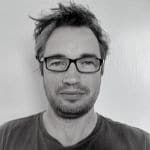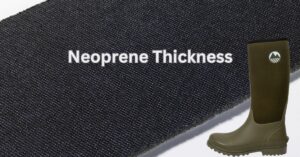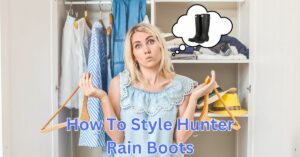Best Rubber Boots for Hiking
At one time, rubber boots were mostly general purpose rain boots that were often made shabbily and without any support or comfort, but that is no longer the case. The truth is that today’s rubber boots can be used for hunting, safety boots, farming and of course walking. If you’re looking for the best rubber boots for hiking, you’ve come to the right place. Once you learned what to look for in hiking boots made out of rubber, it’s a lot easier to find the right pair to meet your hiking needs.
Top Rated Rubber Hiking Boots
Last update on 2024-07-13 / Affiliate links / Images from Amazon Product Advertising API
What Exactly Are Rubber Boots?
As you might guess from the name rubber boots are exactly that, rubber boots. The manufacturers use a process called vulcanization to make the rubber strong and sturdy. Without undergoing this process the rubber would be too flimsy and would not make good footwear.
The vulcanization process also helps the boot become stronger and prevents them from peeling, fading, or chipping. Some inferior rubber boots do not use this process and instead are made with strong, waterproof adhesives.
Watch out for rubber boots that aren’t actually made from rubber at all. Instead they are made from plastic (PVC) which means the boots can be made very cheaply. But as with most things in life, you get what you pay for. We generally recommend that you pay a little more for genuine rubber boots
Most rubber boots have the following features:
- Uppers – These cover your feet from the soles up and are usually made out of either rubber or neoprene. The tops are also called collars, and the type of material used will affect the boots’ weight, durability, water-protection level, and even their warmth factor.
- Overlays – These are there for protection and are usually seen around the Achilles tendon areas and on the toes. They protect from abrasions and stubbing that you might experience in rough terrain, rocky trails, and others.
- Boot linings – Linings are important because they make the boot more breathable and therefore comfortable. Most linings are made out of either fleece, mesh or neoprene
- Soles – The soles on rubber boots have three parts: the insoles, midsoles, and outsoles. Soles usually get attached to the uppers either with waterproof adhesive or through the vulcanization process, depending on the type of boots.
- Gussets – These are there so that the sides of the uppers and depending on the boot can stretch or be adjusted to accommodate people with different calf sizes.
- Buckles and/or zippers – Some rubber boots have buckles and/or zippers to provide for a more perfect fit and to keep dirt and debris out of the boots. They also allow for an easier way to put on and remove the boots from your feet.
Now that you know a few basics about the way rubber boots are made, let’s talk about things to look for when you’re shopping for your rubber hiking boots.
Best Value Rubber Hiking Boots
Last update on 2024-07-13 / Affiliate links / Images from Amazon Product Advertising API
What to Look for in a Hiking Boot Made of Rubber
Rubber boots come with dozens of specialised features, and once you’re familiar with them, it’s a lot easier to decide which set of boots to purchase. When you’re shopping around for a rubber boot that can be used as a hiking book, consider these “extras”:
- Insulated versus non-insulated – If you’ll be hiking frequently in cold conditions, you will need insulated boots. Rubber boot insulation can be made from various materials, such as leather, faux-fur and Neoprene. On average, a good pair of insulated boots will keep you warm in temperatures as low -20 degrees Celsius (5 Farenheit). If you hike only when it’s warm, you can buy boots either with or without an insulating lining. Insulating lining will generally mean that the boots have a more ‘snug’ fit and prevent feet from moving about when hiking. This can help prevent rubbing and blisters forming.
- Camouflage – Although this isn’t a necessity, this feature can make a difference when you’re using the boots on your next hunting expedition. The good news is, they also come in a wide variety of camouflage patterns for you to enjoy, making them somewhat of a fashion statement as well.
- Shaft lengths Shaft lengths in boots can vary and give leg protection. If you frequently hike through deep water or mud, it’s best to choose boots that come up to just below the knee.
- Ankle and heel designs – Some rubber boots offer a feature that locks your feet in place so you get excellent ankle support and great comfort. This means you can walk for many miles and not be uncomfortable or in pain. This feature also means your boots won’t be sucked right off of your feet if you happen to walk through bogs or places with aggressive mud.
- Steel toes – Steel toes aren’t a necessity for hiking, but if you find yourself using your boots for farming and ranching in addition to hiking, they can help add a little extra protection as you go about your day.
- Heel kicks – If you’ve been hiking a while and feel you need a little help getting your boots off at the end of the day, heel kicks can help a lot. These kicks are integrated into the lower heel sections and go a long way in helping you dislodge the heels so that removing your boots is a lot easier.
- Correct size – When looking to nuy boots for hiking it is very important to get the correct size. If the boots are slightly to large they are likely going to rub and if they are too small you will probably get foot cramps.
Top tip: Always wear socks when using rubber boots for hiking. Sock will not only help absorb mositure but they will also help prevent rubbing
Conclusion
There’s a huge selection of rubber boot to choose from that are great for walking. Look for the features we’ve mentioned above to get the best rubber boots for hiking
Rubber Boot Accessories
Last update on 2024-07-13 / Affiliate links / Images from Amazon Product Advertising API















